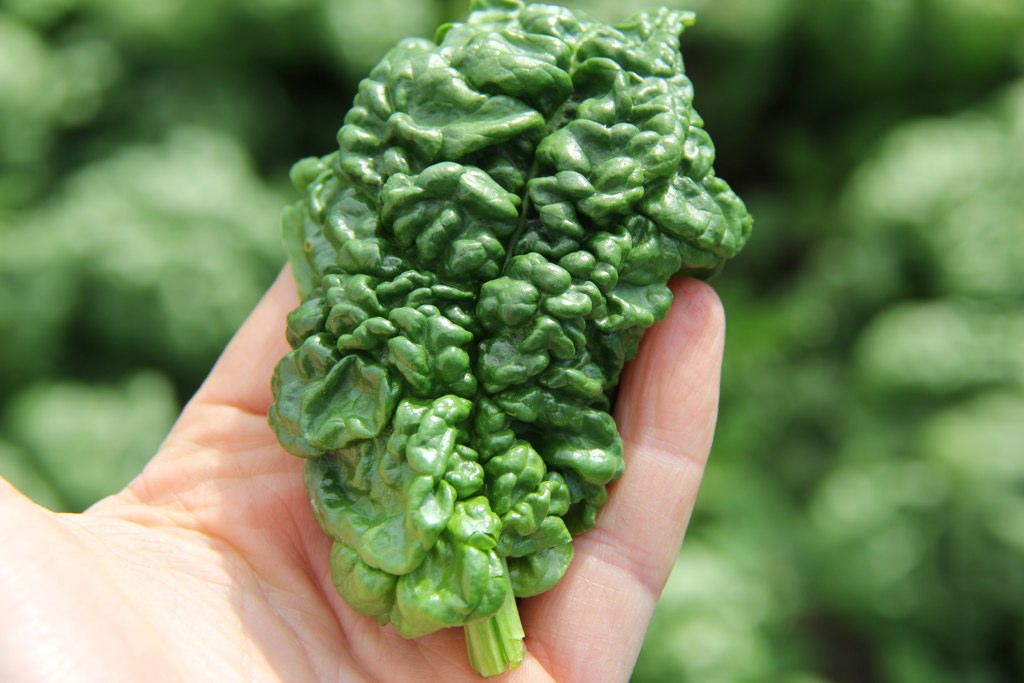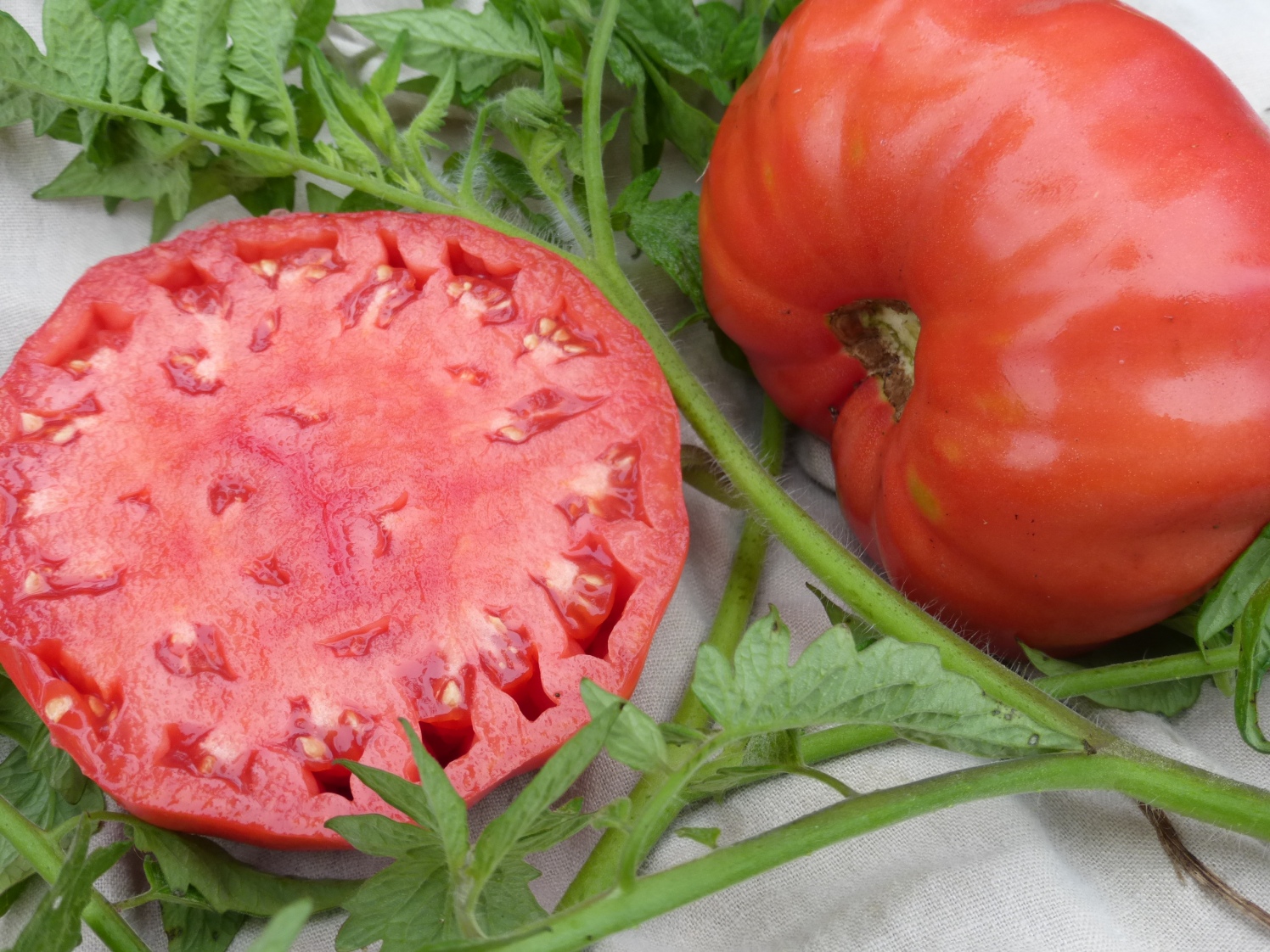By Ira Wallace
Warm weather and late April rains have our fall-planted crimson clover, winter rye, and Austrian winter peas growing like weeds and just starting to bloom. As an edible bonus, the winter peas gave an abundance of sweet pea shoots to add to salads all winter and spring. The bright red flowers of crimson clover provide much-needed pollen and nectar for pollinators and other beneficial insects in spring.
To select the best cover crops for your garden, consider which functions are your priorities, the time of year, and how long the cover crop will be in the ground. Cover crops are important tools all year for filling in gaps between crops while also preventing soil erosion, suppressing weeds, providing habitat for pollinators, and improving fertility. Some even provide an edible bonus, for you and for pollinators. Here are some cover crop favorites in the Southeast.
Winter Nitrogen Fixers – soil fertility out of thin air.
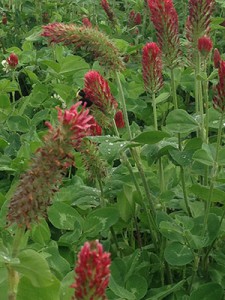 Clover (crimson, white, and red) – Sow clover six to eight weeks before your average first frost date. Clovers fix nitrogen in the soil and thus boost nitrogen for next spring’s garden. Mow one or two times when about half of the crop is flowering. Allow the residue to decompose for at least two weeks before planting vegetables.
Clover (crimson, white, and red) – Sow clover six to eight weeks before your average first frost date. Clovers fix nitrogen in the soil and thus boost nitrogen for next spring’s garden. Mow one or two times when about half of the crop is flowering. Allow the residue to decompose for at least two weeks before planting vegetables.
- Hairy Vetch– Sow hairy vetch six to eight weeks before the average first frost date. This vine-like, vigorously-growing, cold-tolerant, winter-hardy, annual legume adds nitrogen and builds soil organic matter. Hairy vetch grows well in cereal grain mixtures and is an excellent spring weed suppressor.
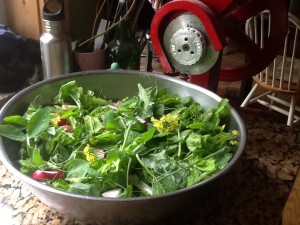 Winter Peas (Austrian)– Sow winter peas four to six weeks before the average first frost date. Sometimes called “black pea” and “field pea”, this is a cool-season, annual legume with good nitrogen-fixing capabilities. Usually planted with rye, oats, or barley to reduce the chance of winter kill. Cut and turn under at full bloom for maximum nitrogen.
Winter Peas (Austrian)– Sow winter peas four to six weeks before the average first frost date. Sometimes called “black pea” and “field pea”, this is a cool-season, annual legume with good nitrogen-fixing capabilities. Usually planted with rye, oats, or barley to reduce the chance of winter kill. Cut and turn under at full bloom for maximum nitrogen.
Winter Soil Builders and Subsoil Looseners – for the surface or deeper down.
- Winter Rye (Cereal Rye) –
Sow winter rye six weeks before the average first frost date and up to two weeks after. A cold-hardy crop, winter rye will grow well into the spring. Winter Rye increases soil organic matter as it decomposes. Mow one to two times when at least 12 inches tall, or when half of the crop has immature seed heads. Allow residue to decompose for at least two weeks before planting vegetables.
- Oats – Sow oats eight to ten weeks before the average first frost date. Oats are killed by the hard frosts. They form a winter surface mulch, preventing erosion and increasing soil organic matter as they decay.
Edible Cover Crops
Traditional gardeners in the Southeast plant a big bed of winter greens (turnips, mustards, kale, and collards) to keep the garden covered and provide fresh eating until spring. Plant this beautiful edible greens cover crop in August or September to build organic matter and provide healthy meals all winter long. Try a mixture of the old Southern favorites and contemporary choices like Seven Top turnip, Lacinato kale, Red Russian kale, Southern Giant Curled mustard greens, and Tatsoi.
If you are in the upper South or in the mountains, cover your winter greens with row cover or plant in a cold frame for winter harvests. Left uncovered in cold winters, the leaves will be too damaged for good eating, but you’ll have fresh new growth in early spring if winter lows aren’t too bad.
For more reason to plant cover crops read our Cover Cropping for Unpredictable Weather
Warm Season cover crops and filling in the summer gaps
- Sorghum-Sudan Grass hybrid – Plant in spring and summer, beginning after the soil has warmed and up until six weeks before first frost. This hybrid is unrivaled for adding organic matter to worn-out soils. These tall, fast-growing, heat-loving summer annual grasses can smother weeds, suppress some nematode species, and penetrate compacted subsoil.
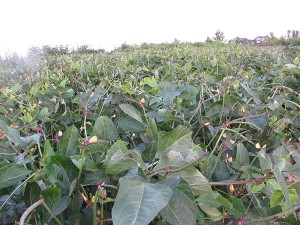 Soybeans (Edamame) and Southern Peas (Cowpeas) –
Soybeans (Edamame) and Southern Peas (Cowpeas) –
Plant in early summer through mid-summer, between spring and fall crops. Mow before pods have formed or when pods are still green and have not matured. These legume family plants can fix nitrogen for an added bonus.
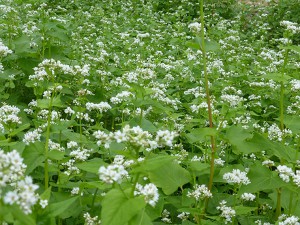 Buckwheat –
Buckwheat –
Plant from spring through early fall when the ground will be open 5 weeks or more. Buckwheat establishes quickly, suppresses weeds and attracts pollinators. Mow one to two times when half the crop is in flower and before hard seeds have formed. Will be killed by frost.
Although fall through winter is the most common time when gardeners grow cover crops, savvy gardeners include summer cover crops in their garden plans. No matter which cover crops you choose or when you fit it in your garden rotation, cover crops allow you to grow your own nitrogen and organic matter in place.
When to Mow or Turn Under Cover Crops
A lot of factors go into determining the best time to turn under or at least cut down your winter cover crop. To get the most biomass, wait until half of the cover crop is in flower but make sure to get it cut down and incorporated before it goes to seed. Some freshly cut cover crops like winter rye inhibit seed germination for the following crop. If you are planning to direct seed allow 2 to 4 weeks for your cover crop to decompose before planting. This same property can be an advantage in weed suppression if the cover crop is just crimped or rolled and left as a mulch for transplanted tomatoes.
Another factor to consider is when you want to plant the next crop. For early spring plantings you may need to cut and turn in your cover crops well before flowering and allow a longer time (maybe 3 to 6 weeks) for the organic matter to decompose before planting. You can speed up decomposition of the cover crop 1 or 2 weeks by sprinkling in some mature compost or applying compost tea to add beneficial soil organisms before turning it under.
For most home gardens you can cut your cover crop with a hand sickle or scythe and add it to your compost. This leaves the considerable roots to add organic matter and aerate the soil. You can also weed-eat it or mow it and just let it lay there on the ground as mulch or till it in. For the home gardener, Roto-tilling is the fastest and easiest way to incorporate your cover crops, but you can also spade in your crop residues the old fashioned way. Digging in your covers crops aids in faster decomposition and less nitrogen loss into the atmosphere.

